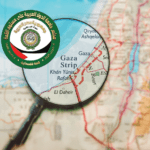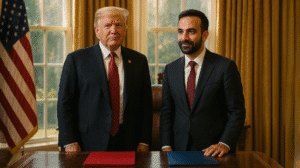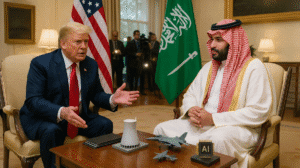Recent clashes in Syria’s coastal provinces of Latakia and Tartus have resulted in over 1,000 fatalities, marking the most severe internal conflict since the ousting of former President Bashar al-Assad in December 2024.
The confrontations pit Syrian government forces against armed groups loyal to the former regime, reflecting persistent instability in regions traditionally supportive of Assad.
The scale and intensity of the violence demonstrates the deepening sectarian divisions and the ongoing struggle for control in key areas of Syria’s transition.
Background: A Power Vacuum and Rising Sectarian Tensions
The downfall of Assad’s government created a significant power vacuum, particularly in coastal areas with large Alawite populations, the sect to which Assad belonged. Historically, these provinces were strongholds of support for the former regime, and many of Assad’s loyalists, including military officers and security personnel, remained embedded within these regions even after the transition of power.
Despite the establishment of a transitional government led by Ahmed al-Sharaa, the leader of Hay’at Tahrir al-Sham (HTS), remnants of the former regime have continued to exert influence. HTS, once a militant opposition group, has repositioned itself as a central authority in Syria’s transitional leadership. However, the persistence of Assad loyalists, particularly in Latakia and Tartus, has fueled ongoing clashes, as government forces attempt to consolidate control over all regions of the country.
Recent Clashes: The Most Deadly Confrontations Since Assad’s Fall
On 6 March 2025, coordinated attacks by Assad loyalists targeted Syrian government forces in Latakia and Tartus. The Syrian Observatory for Human Rights reported that the clashes led to over 1,000 deaths, including 745 civilians, marking the deadliest episode in Syria since the initial civil war erupted in 2011. Government forces responded with heavy reinforcements, imposing curfews and launching counteroffensives to push back opposition forces.
While Latakia and Tartus had remained relatively stable compared to other regions, this outbreak of violence indicates the fragility of the current government’s control. The scale of casualties and the sophistication of the attacks suggest that Assad loyalists continue to operate with substantial resources and local support. Reports indicate that many of these fighters are well-trained military personnel who defected from government forces after Assad’s removal, raising concerns that the insurgency may persist or escalate further.
The Formation of the Military Council for the Liberation of Syria
In response to these developments, former Assad regime officers announced the creation of the Military Council for the Liberation of Syria. This group has declared its mission to “liberate all Syrian territory from occupying terrorist forces” and dismantle what it calls the current government’s “oppressive sectarian apparatus.” The formation of this council signals the deepening divide between factions in Syria and raises fears of prolonged conflict.
Given that this new council is led by experienced military personnel, its capabilities pose a serious challenge to the transitional government. Without effective countermeasures, the council could gain control of strategic areas, further destabilizing the country and reversing efforts toward political reconciliation. The government’s ability to neutralize this new insurgency will be a critical test of its legitimacy and effectiveness.
Government Efforts to Maintain National Unity
Despite the ongoing violence, the transitional government has been actively working to integrate various minority groups in an effort to maintain national unity. A significant development has been an agreement to incorporate the U.S.-backed Kurdish-led Syrian Democratic Forces (SDF) into the national armed forces. The deal aims to unify civil and military institutions in northeastern Syria, bringing previously semi-autonomous Kurdish regions under central government control. While this move is expected to strengthen national cohesion, it has also drawn opposition from external actors such as Turkey, which has long viewed the SDF as a threat to its own security.
Similarly, negotiations are ongoing with the Druze community in the Suwayda region, where local security forces are being integrated into national institutions. This effort seeks to prevent further fragmentation of the country along sectarian lines. However, the integration process remains delicate, as many within the Druze and Kurdish communities remain wary of government intentions.
External Pressures and the Risk of Territorial Fragmentation
The transitional government faces mounting external pressures, with key regional actors pursuing their own strategic interests in Syria’s future. Israel, Turkey, and Iran, in particular, have taken active roles in shaping the country’s trajectory, often in ways that could threaten its territorial integrity.
Israel has been engaged in military operations targeting Iranian-backed militias within Syria, aiming to limit Tehran’s influence in the region. Meanwhile, Turkey continues to assert control over northern Syria, supporting factions that oppose both HTS and Kurdish forces. Iran, on the other hand, has been accused of fueling sectarian tensions to weaken the transitional government and maintain its influence in the region. These competing agendas further complicate Syria’s already precarious path toward stability and make the risk of territorial fragmentation an ongoing concern.
A Critical Test for the Transitional Government
The recent clashes between Syrian government forces and Assad loyalists highlight the fragile state of Syria’s transition. While Ahmed al-Sharaa’s government has managed to consolidate power in certain regions, resistance from remnants of the former regime continues to undermine stability, particularly in Alawite-majority areas.
If left unresolved, these tensions could escalate into wider sectarian violence, exacerbating divisions and prolonging instability. The government must act decisively to integrate all factions into the political process while preventing further bloodshed. Failure to address these deep-rooted grievances could lead to another prolonged conflict, undoing the progress made since Assad’s removal.
For Syria’s transitional leadership, the stakes are high. Balancing the demands of diverse ethnic and sectarian groups while fending off insurgencies and external interference will determine whether the country can move toward lasting peace or descend once again into chaos.


















